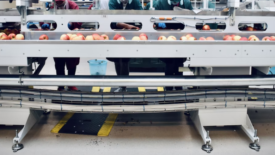Home » Keywords: » big data
Items Tagged with 'big data'
ARTICLES
How has adoption of different technologies affected processors' daily food safety operations and improved their food safety outcomes?
Read More
How is the Revolution in Technology Changing Food Safety?
How has adoption of different technologies affected processors' daily food safety operations and improved their food safety outcomes?
July 2, 2024
Big Data
Drowning in a sea of data
We’re told to collect as much data from our processes as we can, and there’s practically infinite storage space in the cloud—but how do you make sense of all this data?
August 21, 2019
Never miss the latest news and trends driving the food safety industry
eNewsletter | Website | eMagazine
JOIN TODAY!Copyright ©2025. All Rights Reserved BNP Media.
Design, CMS, Hosting & Web Development :: ePublishing











